|
|
|
Sort Order |
|
|
|
Items / Page
|
|
|
|
|
|
|
| Srl | Item |
| 1 |
ID:
182549
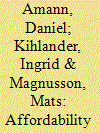

|
|
|
|
|
| Summary/Abstract |
Cost escalation for many complex defence equipment is arguably not sustainable. Customer driven requirements have led to an exponential increase in costs by pushing frontiers of technology to support primarily incremental improvements of traditional equipment concepts. Accordingly, affordability has become a more discussed subject in defence acquisition. This paper addresses the process of generating complex defence equipment concepts. The purpose is to explore how affordability is managed in that process and to identify possible leads to how an unsustainable cost escalation for this type of equipment can be curbed. This is done by studying two cases of concept generation of future combat air equipment systems from a company process perspective. This applied micro perspective on cost escalation showed that none of the concepts generated in these two cases were assessed to curb the cost escalation. Further, the innovation model for the generated concepts, with only one notable exception, was incremental. Nevertheless, the empirical observations from these two cases offer leads on how to potentially foster a more innovative and affordability-oriented concept generation process for future defence equipment, as well as indicating avenues for future research.
|
|
|
|
|
|
|
|
|
|
|
|
|
|
|
|
| 2 |
ID:
182546
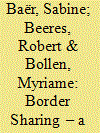

|
|
|
|
|
| Summary/Abstract |
From 2011, due to war, conflict, and ensuing unrest, both in the Middle East and Africa, the European Union’s southern external borders were confronted with an influx of migrants and refugees. At its height, the influx became known as a migration (or refugee) crisis and the European Border and Coast Guard Agency (FRONTEX) was perceived as a pivotal partner in crisis management at the borders. FRONTEX does not avail of its own operators nor materiel, and, consequently, Schengen member states and Schengen Associated Countries were requested to contribute personnel and equipment for operations. From 2012 to 2018, this article analyzes the member states’ burden-sharing behavior regarding their contributions to European Border Guard Teams and Technical Equipment Pool. Our findings include both over- and under-contributors. As the sum total of contributions over all member states is high, it could be concluded, member states derive common benefits from border management. However, results also show that, as compared to others, member states situated at the European Union’s Southern and Eastern borders, on average, are over-contributing. Moreover, contributions from individual member states fluctuate over time. Apparently, the acquired benefits are not always perceived in the same way.
|
|
|
|
|
|
|
|
|
|
|
|
|
|
|
|
| 3 |
ID:
182552


|
|
|
|
|
| Summary/Abstract |
We were deeply saddened by the passing of our mentor, friend, and colleague Michael D. Ward on 9 July 2021. Mike served on the editorial board of Defence and Peace Economics from the start of 1990 until 2015, and made important contributions to the study of military expenditures, the economics of peace and militarized conflict, as well as modeling and statistical methods in the social sciences. We extend our deep sympathies to Mike’s family Sandra and Chris.
|
|
|
|
|
|
|
|
|
|
|
|
|
|
|
|
| 4 |
ID:
182545
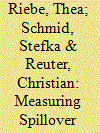

|
|
|
|
|
| Summary/Abstract |
Spillover effects describe the process of a company benefiting from the R&D activities of another one and thereby gaining an economic advantage. One prominent approach for measuring spillover effects is based on the analysis of patent citation networks. Taking social media analytics and knowledge economics into account, this paper presents a complementary approach to quantify spillover effects from defense to civilian research and development, analyzing 513 employment biographies from the social network LinkedIn. Using descriptive network analysis, we investigate the emigration of personnel of the German defense industry to other civilian producers. Thereby, our study reveals that in the last decade, employees of defense suppliers have changed positions significantly less often, with 3.24 changes on average than professionals who have worked more than 50% of their jobs in the civilian sector, having changed 4.61 times on average. Our work illustrates the churn behavior and how spillover effects between defense and civilian sectors can be measured using social career networks such as LinkedIn.
|
|
|
|
|
|
|
|
|
|
|
|
|
|
|
|
| 5 |
ID:
182550
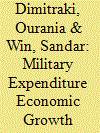

|
|
|
|
|
| Summary/Abstract |
The Hashemite Kingdom of Jordan is a nation that has persisted through turbulent times. The country’s leaders have long attempted to balance the allocation of resources between a strong military and a developing economy in their quest for stability, peace and prosperity. This paper examines and sheds further light on the relationship between Jordan’s military expenditure and its economic growth during the period 1970–2015. Using the Gregory -Hansen cointegration technique allowing for structural breaks, and the ARDL methodology this paper tests the short – and long–run equilibrium relationship between military expenditure and economic growth in Jordan. Furthermore, with the error correction model (ECM) and the CUSUM and CUSUMSQ tests, we examine the stability of the above relationship. The results reveal positive short – and long–run relationships between military expenditure and economic growth in Jordan, during the period under study. This finding has important policy implications for the Jordanian state, as it justifies the transfer of resources to the military, showing that it has not had a negative impact on economic growth.
|
|
|
|
|
|
|
|
|
|
|
|
|
|
|
|
| 6 |
ID:
182551
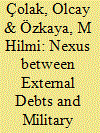

|
|
|
|
|
| Summary/Abstract |
The dissolution of the Eastern Bloc at the end of the Cold War compelled most of the centrally-planned economies to adjust their economic order to become free market economies. During the transition process, most of those countries experienced severe external debt overhang problems, due to excessive budget deficits and rapid liberalization of foreign trade and capital account regimes. In addition, most of those countries were facing political unrest due to internal and external conflicts by the end of the Cold War, with rampant weapons proliferation and the arms race. By employing the fixed effect panel threshold regression approach, we unveil the non-linear relationship between military spending and external indebtedness, which has not been examined for the selected twelve transition economies over the period from 1997 to 2016. Our findings reveal the presence of double threshold effects that are embedded in military expenditure, and the debt-accelerating effect of military spending emerges after the first regime. In the early stages, countries tend to finance military expenditure with the help of domestic savings, whereas the requirement for external borrowing emerges later as domestic savings become inadequate. We have also produced some crucial policy recommendations to reflect our findings.
|
|
|
|
|
|
|
|
|
|
|
|
|
|
|
|
| 7 |
ID:
182548
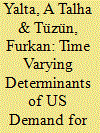

|
|
|
|
|
| Summary/Abstract |
We adopt the maximum entropy bootstrap methodology in a rolling window framework in order to investigate the time varying determinants of the US demand for defense spending. Our results based on annual data between 1967 and 2018 show that the US defense demand is mainly driven by lagged military burden, economic growth, GDP share of non-military government spending, election cycle, relative costliness of defense as well as the Russian and the Chinese military burdens. Moreover, the signs and the magnitude of the coefficients show significant variations throughout the sample period. The results also provide a strong evidence of the rising rivalry between the US and China, reflecting the developments in the world economy and the global military arena in the last two decades.
|
|
|
|
|
|
|
|
|
|
|
|
|
|
|
|
| 8 |
ID:
182547
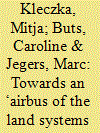

|
|
|
|
|
| Summary/Abstract |
Despite considerable restructuring since the end of the Cold War, the European armoured vehicle industry remains largely fragmented along national lines. As stagnating domestic budgets, rising R&D and production costs and the limits of export-focused industrial strategies provide an economic imperative for further consolidation, the merger of Nexter and Krauss-Maffei Wegmann in 2015 has often been regarded as a mere starting point for a wider trans-European reorganisation process which could even result in a land-based equivalent to Airbus. This article proposes a new classification system to identify the ‘prime competitors’ of the European armoured vehicle industry and debates prospects for further consolidation among them. By means of a volume-based variant of the HHI, concentration in European procurement of armoured vehicles is estimated and various merger simulations are conducted. The results suggest that, while the European armoured vehicle industry will likely experience further consolidation, this process will probably be too small in scope to create an ‘Airbus of the land systems sector’. In the medium to long term, however, market pressures and collaborative programmes such as the Main Ground Combat System might have the potential to create a ‘European champion’ in selected subsectors of the armoured vehicle industry.
|
|
|
|
|
|
|
|
|
|
|
|
|
|
|
|
|
|
|
|
|